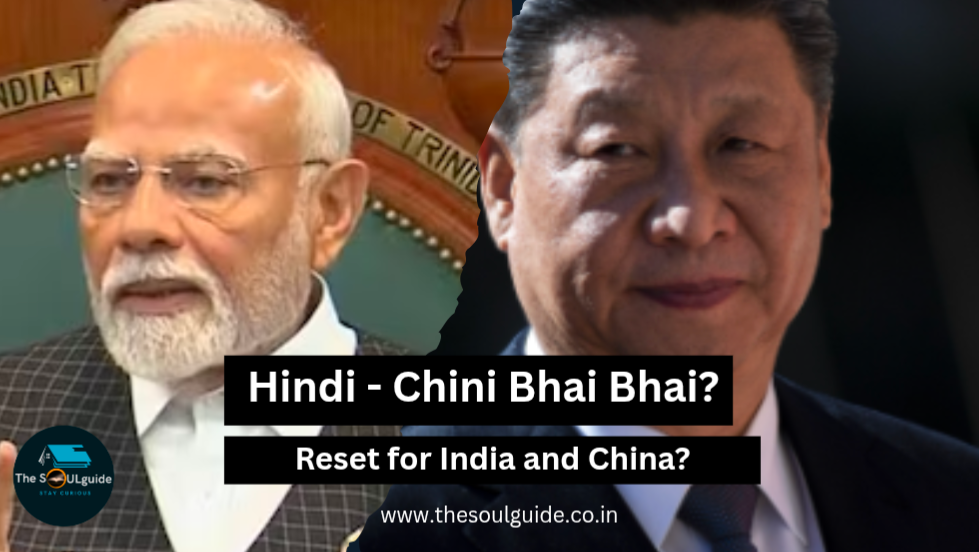How protests in Nepal showed deeper societal issues and long standing discontent among public.
- TheSoulGuide

- Sep 14
- 4 min read
In September 2025, Nepal saw its worst protests and major political upheaval in its recent history with many taking to streets against the government, with few of them entering the houses of ministers and spreading chaos. Around September 4, 2025, the Nepal government announced a ban on 26 social media platforms (including Facebook, Instagram, WhatsApp, X etc.), because they had apparently failed to register with the Ministry of Communications or set up grievance redress mechanisms. But the youth of Nepal, saw it as a curb on freedom of speech, censorship, and part of broader authoritarian tendencies. Which shows the distrust and frustration was deeper and this move of social media ban was a trigger point among the masses who had long‑standing discontent over corruption, nepotism, economic stagnation, political instability, inequality, lack of opportunity (especially for younger people), perceptions that political elites (and even their children, the so‑called “nepo‑kids”) live in privilege while many suffer.
Nepal has also unattended structural problems in governance such as the weak institutions, political fragmentation, frequent changes in government (many prime ministers since the abolition of monarchy in 2008), weak delivery of services, etc. These have long made people impatient for major change. The public of Nepal was also growing furious of Chinese interference in politics as lately multiple politicians were accused of taking bribes and giving economic projects to Chinese companies. Major big projects and assets of Nepal were handed over to Chinese for economic purposes.
As protests intensified, clashes broke out between demonstrators and security forces. Police used tear gas, water cannons, and reportedly even live ammunition, leading to the deaths of several protestors and injuries to hundreds. On the evening of September 8 and into September 9, the situation became increasingly volatile: government buildings were set on fire, politicians' residences were attacked, and some reports emerged of looting and prison escapes amid the chaos. In response, the government lifted the social media ban on September 9, and the Prime Minister KP Sharma Oli resigned among other ministers having already resigned leading to fall of government. However, the unrest continued, prompting the imposition of curfews in several cities and the deployment of the Nepal Army to restore order.
Facing the mounting pressure, and after the Prime Ministers resignation, the political parties began discussions on forming an interim government. In a historic development on September 12, Sushila Karki, a former Chief Justice of Nepal’s Supreme Court, was appointed as the interim Prime Minister, becoming the first woman to hold the position. On the same day, Nepal’s President dissolved Parliament and scheduled fresh general elections for March 5, 2026. The decision was aimed at de-escalating tensions and resetting the political process, although questions remain about the legitimacy and structure of the interim arrangement.
What experts say about the road ahead
Based on commentary from analysts so far, the possible scenarios, challenges, and what might follow include the Positive / stabilizing possibilities, Interim government and election roadmap. The step to appoint an interim PM and schedule fresh elections for March 2026 is seen by many as necessary to restore constitutional normalcy. If the electoral process is credible, it may give people a chance to reset trust.
Given the depth of youth anger over corruption and nepotism, there is pressure for much greater transparency, for investigations into abuses (including protest deaths), governance reforms, regulation of political funding, etc. Experts believe that unless the political class responds seriously, unrest could recur.
The “Gen Z” protests have shown that young people are a major political force now. If the system allows more youth voices (through civil society, student unions, independent leaders), it might help reduce disillusionment.
How India‑Nepal relations have been lately
Because Nepal shares deep historical, cultural, economic and geographic ties with India, the events in Nepal naturally draw Indian attention. Relations have seen tensions in recent years, and these protests also interact with that backdrop.
India has expressed concern, PM Modi called the violence “heart‑rending” and appealed for peaceful conduct in Nepal. India’s Ministry of External Affairs issued advisories for Indian nationals in Nepal to exercise caution, defer travel, etc. and India’s border security at Nepal border has been put on alert; joint monitoring etc.
Some of the sources of strain in India‑Nepal relations before the protests are the Border disputes (Kalapani / Lipulekh / Limpiyadhura etc.) have been an irritant. Nepal's Oli has been giving statements which destabilized the region such as the Kalapani-Limpiyadhura-Lipulekh border dispute flared notably during his leadership. In 2020, India published a new political map including these disputed territories as part of India, which Nepal strongly protested. Oli recalled Nepal’s ambassador to India and ramped up rhetoric on sovereignty.
Nepal has been trying to assert more independent foreign policy and becoming more dependent on China. Some Nepali leaders and experts talk about needing “space” and becoming less dependent on China, as it is a bully in the region and exploits other countries which can be seen by its interaction with other countries of using debt trap diplomacy.
It is also being seen that the protests could push Nepal’s elite and public sentiment to demand more autonomy in foreign policy, which may lead to stronger ties with China or more diversified relations. Experts note that Nepal does not want to be seen as a “proxy” of either.
However, for India, stability in Nepal is important: open border trade, movement of people, political stability in its neighborhood, energy/electricity exports etc. So India is likely to want to see a political settlement in Nepal that is stable, respected, and not hostile.
stay tune for more.
Get membership to feature your article. Check here.




Comments